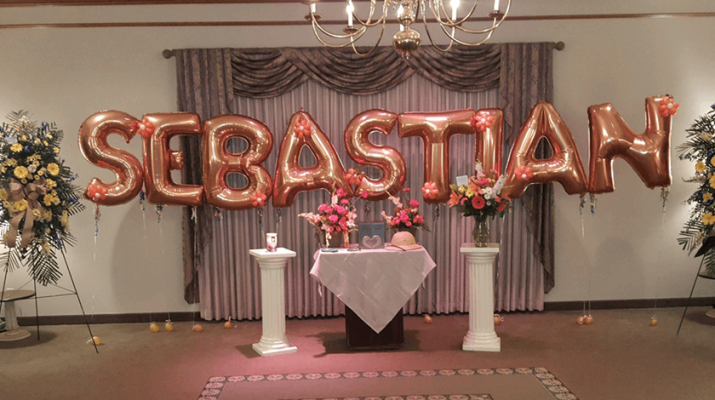Baby boomers reflect the ‘I did it my way’ anthem of their generation even in funeral pre-planning
By Deborah Jeanne Sergeant
Fewer people are choosing the traditional embalming and casket burial in a cemetery, according to the area’s funeral industry experts. Though still a popular option, other choices are becoming more common.
For some, it’s all about personalizing the experience as a fitting tribute. Others want to reflect their culture of origin. Still others want their body to benefit mankind or the environment.
Baby boomers reflect the “I did it my way” anthem of their generation even in funeral pre-planning.
Whether their ashes become lab-created diamonds, are shot into space in a rocket, or scattered at their favorite fishing spot, it’s all about tying their memorial into something that no one will forget.
“People have a brand-new concept of what to do once someone passes,” said JudieLynn McAvinney, president and CEO of White Haven Memorial Park in Pittsford.
Her business provides a park-like setting with a fountain, green burial section and the option to “reconnect with nature for the burial of cremains,” she added.
“Cremains” is industry-speak for cremated remains.
The property is Audubon Society-registered and passersby often hike through the area. The green burial area grows wildflowers and native grasses. A flat marker may indicate the grave, or the family may opt to receive GPS coordinates to find it.
Nate Romagnola, vice president at White Haven, explained that the green burial has to do with avoiding chemicals and using natural methods, which could include a biodegradable casket, such as wicker, or using a simple shroud.
He said the tradition with embalming began around Civil War times, when bodies had to travel long distances before burial. Going green hearkens back to earlier and simpler times when the deceased were buried and allowed to return to the earth.
Romagnola said that White Haven has sold more than 300 of its 400 spaces in the green burial area.
The green burial also saves the family money, since they don’t have to buy a concrete vault, casket and headstone. Though there’s no viewing, families can still have a service or calling hours at the chapel as long as it’s within a day or two of the death.
In recent years, cremation has outpaced burial. Romagnola and McAvinney agree that cost is a big factor, but personalization represents another important factor.
“We make sure they’re remembered in a way that they wanted to be remembered,” Romagnola said.
Instead of keeping cremains in a purchased ceramic urn on the shelf, some ask for a biodegradable container or make their own. Romagnola has seen a motorcycle helmet turned into an urn, for example. Those asking for biodegradable urns often choose to bury them and plant a tree or bush on top of it.
The demand for flowers at White Haven grew so much that the business started a greenhouse to supply the park’s flowerbeds.
“We’re a celebration of life,” McAvinney said. “A lot of people are stunned as to how un-cemetery like we are.”
For people who want a green burial but cannot conduct the funeral within two days, green embalming fluids can lengthen the time, according to David Crawford, owner of Crawford Funeral Home, Inc. in Rochester.
“They’re formulated with natural elements that delay decomposition for about five to six days, which permits open casket viewing and people can come in plenty of time,” Crawford said. “It’s a nice option for some people.”
He said that those who opt for green burial should ensure their plot accepts this choice, since conventional plots require casket vaults, for example.
Another trend Crawford has observed is departure from a traditional funeral service to more of a family gathering at a place the deceased enjoyed, such as the family’s camp or restaurant.
“It’s more about remembering the person and how their life was lived,” Crawford said. “Everyone has different rites and ceremonies that are meaningful to them.”
Keeping a bit of their loved one with them helps some families cope. Crawford said that some families have jewelry made from the cremains, such as diamonds (www.lifeGem.com, www.heart-in-diamond.com and www.lonite.com are three such vendors). The process can take months to complete, but processors use only a small amount of hair or ashes for lab-created gems.
For scattering cremains, Crawford recommends doing so on private land, as some municipalities have statutes against the practice, since it has been abused in the past.
“Do it at a private time so it has meaning as a family,” Crawford said. “They should not do it at county parks or public property. Choose a private place like a family camp.”
Some people choose to leave their body as a means of helping others. While indicating organ donation on the driver’s license is a simple way to leave a legacy, donating one’s entire body to scientific study can help medical schools train the next generation of physicians.
Anatomical gifts are accepted only from those 18 and older and those of sound mind. The only disqualifying conditions include infectious or contagious disease, obesity and autopsy. The whole body must be surrendered, with the exception of the eyes if they are donated separately.
Sixteen medical schools in New York maintain a donor program, including University of Rochester Medical Center.
In addition to pre-registering, their loved ones know about their choice so the medical school is made aware of the donor’s death right away. Bodies must be accepted within 24 hours.
Bodies remain with the medical school for about two years, after which time they’re cremated at the school’s expense. The cremains may be returned to the family or buried, if they wish.

